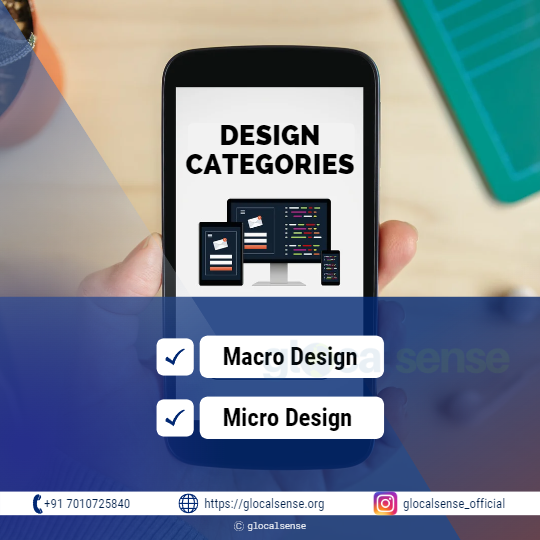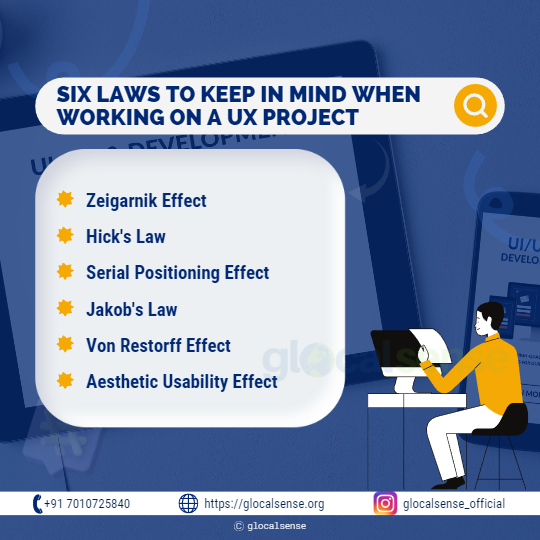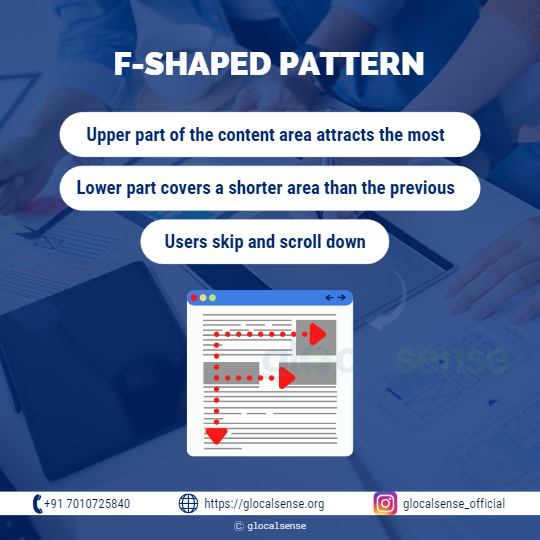Every user who interacts with your web design is a human — at least until the singularity occurs — which means they are all subject to certain psychological principles. Moreover, psychologists and philosophers have observed things about human nature that still hold today. So if you’re a UX designer worth your salt, pay attention to them.
Design is a broad field with several sub-disciplines. In addition, designers come in various styles, each with their area of expertise, like photo layout, movement layout, and interplay layout, to mention a few. But, regardless of what you do in the design profession, there are some hard and fast rules that every fashion dressmaker should be aware of. Moreover, these six concepts can be implemented at product design’s macro and micro levels.

Psychologists have already done the hard job of conducting clinical testing and publishing scholarly papers to psych-test your designs. So here are the six laws to keep in mind when working on a UX project.
1. Zeigarnik Effect
The Zeigarnik Effect states that tasks left unfinished or interrupted are more likely to be remembered. Therefore, by including a basic progress bar, you can aid users in remembering specific unfinished tasks.
Completed tasks are remembered better than unfinished or interrupted tasks. A Soviet psychologist, Bluma Wulfovna Zeigarnik, conducted a memory test. She examined her memory of complete and incomplete tasks. She discovered that incomplete tasks are more likely recalled than successful ones.
What can we do to improve our design by applying Zeigarnik Effect?
The Zeigarnik Effect could deceive users and get them to do things they wouldn’t normally do. For example, Zeigarnik Effect can be used by one of the most well-known professional networking websites to persuade users to complete their profiles by displaying some illusionary progress and misleading them into thinking their profile is incomplete.

2. Hick’s Law
By applying Hick’s Law, the number and complexity of options available will increase the time for someone to decide. Conversely, it reduces the number of options to aid decision-making. In 1952, psychologists William Edmund Hick and Ray Hyman investigated the relationship between a person’s stimuli range and response time to any given stimulus. They discovered that the more stimuli a person has to choose from, the longer it takes them to decide which to interact with. Furthermore, the choosing time will increase logarithmically as the number of options increases.
The time it takes to decide increases in proportion to the number and complexity of options available.
What can we do to improve our design by applying Hick’s Law?
We may simplify the navigation options, making it easier for consumers to locate items. For example, we don’t have to show all the information on the initial screen, and breaking down complex operations into smaller steps is acceptable.
3. Serial Positioning Effect
The Serial Position Effect illustrates how the order of information in a sequence affects human memory. It implies that a series’s first and last items are the most memorable. In contrast, the middle ones are difficult to recall. Users will most likely remember the first and last things in a series.
The serial-position effect describes a person’s tendency to remember the first and last items in a series the best. In contrast, the midway things are recognized as the poorest.
People tend to remember the first and last items in a series the best. This aspect is likely why ABC and XYZ stand out the most among the other alphabets.
What can we do to improve our design by applying the Serial Positioning Effect?
We can exploit this by emphasizing the most important information at the beginning and conclusion of the document and putting the rest in the middle. This principle is used by most businesses, particularly on their landing pages. The first part of the landing page communicates the most significant reasons to acquire their product. The middle section displays less critical information, and the final section contains information about the call to action.
4. Jakob’s Law
The balance between novelty and ingenuity is the first rule of UX psychology. New designers frequently set out to reinvent the wheel, possibly express their artistic personality or make their website stand out from the crowd. Unfortunately for these innovators, it’s widely acknowledged that people dislike novel experiences.
Jakob’s Law was created by Jakob Nielsen of the Nielsen Norman Group. He claims that when it comes to websites, users value familiar experiences. Jakob’s Law is related to the group’s 2008 eye-tracking study, which found that most internet users consume and similarly absorb the material. Users will most likely read across the top of your website, then move their attention downwards to read again before scanning up and along the left side. Of course, many individuals create content to prevent consumers from engaging in too much of this behavior, such as splitting up articles with bullet points and visuals. Still, some straightforward, boring content might be acceptable at times.
The Internet User Experience, according to Jakob’s Law, signifies that users prefer your site to function similarly to their other favorites. Users spending most of their time on other websites want your site to function similarly to those they are already familiar with.
5. Von Restorff Effect
The Von Restorff Effect is also about how our brains group similar items, continuing the trend of psychological principles that could be horror movie titles. This rule indicates that while we will always group objects that appear similar, we will recall the ones that appear to be the most different.
The Von Restorff Effect is a wonderful way to get your users to recall some components above others in UX design. For example, you might want to indicate that one of your items is on sale, so one of your thumbnails will have a prominent highlight, even if the rest appear the same. On the other side, if you highlight too many elements, the ones that aren’t highlighted will stand out.
The Von Restorff effect emphasizes the primary object, often known as the isolation effect. In other words, when several comparable objects are present, the one that stands out is more likely to be remembered.
What can we do to improve our design by applying the Von Restorff Effect?
The Von Restorff effect could be used to make certain information stand out. For example, we can utilize this when we need the user to focus on a specific item inside a list, such as an at-risk card, when the rest of the cards are in their normal state.
6. Aesthetic Usability Effect
The Aesthetic Usability Effect occurs when individuals perceive an attractively designed interface to be easier to use than one that is not. In other words, individuals are more tolerant of usability faults because they have a favorable emotional response and experience with the interface’s visual design.
A great user experience should focus on a well-functioning user interface (UI) and entice users because of the usability effect. The aesthetic usability effect has been seen in several experiments and has significant implications for a design’s acceptance, use, and performance.
- People’s brains respond positively to aesthetically pleasing designs, assuming the design truly works better.
- People are more tolerant of minor usability flaws when a product or service’s design is pleasant to the eye.
- Usability concerns can be hidden behind aesthetically good design, preventing errors from being detected during usability testing.
Investing in aesthetically pleasing UI is a good idea since great design can give consumers the impression that the interface is well-organized and functional. However, the aesthetic advantage is vital when aesthetics also supports and enhances the product’s functionality.
Final Thoughts
The concept of an F-shaped reading pattern is another concept to consider when understanding UX principles. For example, the F-shaped pattern of two horizontal stripes followed by a vertical stripe is commonly used by users when reading a webpage.

The truth is that most visitors have less possibility to read your entire website from top to bottom. Instead, they will skim the website most effectively to find their required information. As a result, if the information is displayed where their eyes are concentrated, you’ll have a better chance of attracting their attention.
There are various tools for measuring (or heat-mapping) your site to see what attracts visitors’ attention and why, so it’s worth looking into them. Websites have been developed previously, so you have plenty of examples to draw from for ideas on how to make yours effective from a UX perspective. The good news is that you don’t need a UX design degree to recognize when a website isn’t user-friendly.
These UX basics can help you determine what your clients search for when visiting your website. As a result, you may optimize the UX and get the desired results. If you keep these six rules in mind, the UX basics can be simple to understand. And you can make your website substantially more effective and user-friendly simultaneously.
